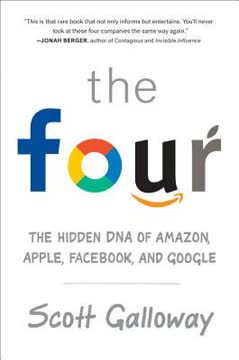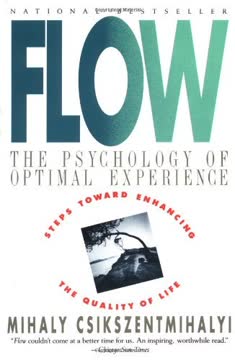Key Takeaways
1. Success hinges on how we react to failure
"Failure is rich in learning opportunities for a simple reason: in many of its guises, it represents violation of expectation. It is showing us that the world is in some sense different than the way we imagined it to be."
Embracing failure. Successful individuals and organizations understand that failure is not just inevitable but essential for growth and innovation. They view failures as valuable data points that highlight discrepancies between expectations and reality, providing crucial insights for improvement.
Learning from mistakes. Rather than avoiding or concealing failures, high-performing entities actively seek them out, analyze them thoroughly, and use the lessons learned to refine their processes and strategies. This approach allows for rapid adaptation and continuous evolution in complex, dynamic environments.
Key elements of a failure-positive mindset:
- Openness to feedback and criticism
- Willingness to experiment and take calculated risks
- Systematic analysis of both successes and failures
- Integration of lessons learned into future practices
2. Aviation industry's approach to safety sets the gold standard
"Success is always the tip of an iceberg. We learn vogue theories, we fly astonishingly safe aircraft, we marvel at the virtuosity of true experts. But beneath the surface of success—outside our view, often outside our awareness—is a mountain of necessary failure."
Rigorous safety protocols. The aviation industry has achieved remarkable safety standards by implementing comprehensive systems for reporting, analyzing, and learning from every incident and near-miss. This approach has resulted in a staggeringly low accident rate of one per 2.4 million flights.
Continuous improvement. Airlines and regulatory bodies constantly refine their procedures based on data gathered from black boxes, pilot reports, and extensive investigations. This iterative process ensures that each flight benefits from the cumulative wisdom gained from past experiences, both successful and failed.
Key features of aviation safety culture:
- Mandatory reporting of all incidents and near-misses
- Non-punitive approach to error disclosure
- Thorough investigation of all accidents and incidents
- Widespread dissemination of findings and recommendations
- Regular training and simulations based on real-world scenarios
3. Healthcare sector struggles with preventable errors
"Far from learning from our mistakes, we edit them out of the official biographies we all keep in our own heads."
Alarming statistics. Despite advances in medical technology, preventable medical errors remain a significant cause of death in developed countries. Studies estimate that between 50,000 and 400,000 people die annually in the United States alone due to avoidable medical mistakes.
Cultural barriers. The healthcare industry's struggle with error prevention stems largely from a culture that often prioritizes individual expertise over systemic safeguards. This mindset can lead to a reluctance to admit mistakes, hindering the sector's ability to learn and improve.
Factors contributing to healthcare errors:
- Complexity of medical conditions and treatments
- Time pressure and resource constraints
- Hierarchical structures that discourage open communication
- Fear of litigation and professional repercussions
- Lack of standardized error reporting and analysis systems
4. Cognitive biases hinder our ability to learn from mistakes
"We cover up mistakes, not only to protect ourselves from others, but to protect us from ourselves. Experiments have demonstrated that we all have a sophisticated ability to delete failures from memory, like editors cutting gaffes from a film reel."
Self-protective mechanisms. Human beings are naturally inclined to protect their self-image and avoid cognitive dissonance. This tendency leads to various cognitive biases that can prevent us from acknowledging and learning from our mistakes.
Overcoming mental barriers. Recognizing and actively counteracting these biases is crucial for personal and organizational growth. By cultivating a mindset that views failures as learning opportunities rather than threats to self-esteem, individuals and groups can unlock their full potential for improvement and innovation.
Common cognitive biases affecting failure analysis:
- Confirmation bias: Seeking information that confirms existing beliefs
- Hindsight bias: Believing events were more predictable than they were
- Attribution error: Blaming external factors for personal failures
- Overconfidence bias: Overestimating one's own abilities and judgment
- Status quo bias: Preferring the current state of affairs over change
5. Marginal gains philosophy drives continuous improvement
"Success is always the tip of an iceberg. We learn vogue theories, we fly astonishingly safe aircraft, we marvel at the virtuosity of true experts. But beneath the surface of success—outside our view, often outside our awareness—is a mountain of necessary failure."
Incremental progress. The marginal gains approach focuses on making small, continuous improvements across multiple areas of a system or process. Over time, these seemingly minor enhancements compound to produce significant overall progress.
Holistic perspective. This philosophy encourages a comprehensive view of performance, recognizing that success is often the result of optimizing numerous interconnected factors rather than relying on a single breakthrough innovation.
Examples of marginal gains in action:
- British Cycling team's unprecedented success through small improvements
- Toyota's Kaizen philosophy of continuous improvement
- Google's constant refinement of search algorithms
- Netflix's data-driven approach to content creation and user experience
- Amazon's relentless focus on optimizing every aspect of its operations
6. Creating a culture of open communication is crucial
"If you look at why Amazon is so different than almost any other company that started early on the internet, it's because Jeff approached it from the very beginning with that long-term vision … It was a multidecade project. The notion that he can accomplish a huge amount with a larger time frame, if he is steady about it, is fundamentally his philosophy."
Breaking down barriers. Fostering an environment where individuals feel safe to voice concerns, share ideas, and report errors is essential for organizational learning and growth. This openness allows for the rapid identification and resolution of potential issues before they escalate.
Leadership's role. Creating such a culture requires active support and modeling from leadership. Leaders must demonstrate vulnerability, encourage diverse perspectives, and reward constructive criticism to build trust and promote open dialogue throughout the organization.
Key elements of an open communication culture:
- Psychological safety: Ensuring team members feel safe to take risks
- Regular feedback mechanisms: Establishing channels for ongoing dialogue
- Transparency: Sharing information openly across the organization
- Inclusive decision-making: Involving diverse voices in problem-solving
- Recognition of constructive dissent: Valuing and rewarding critical thinking
7. Black box thinking: focusing on process details for success
"We learn vogue theories, we fly astonishingly safe aircraft, we marvel at the virtuosity of true experts. But beneath the surface of success—outside our view, often outside our awareness—is a mountain of necessary failure."
Granular analysis. Black box thinking involves meticulously examining the details of processes and outcomes to identify areas for improvement. This approach, inspired by aviation's use of flight data recorders, allows for a deep understanding of both successes and failures.
Data-driven decision making. By collecting and analyzing comprehensive data on all aspects of performance, organizations can make informed decisions based on evidence rather than intuition or assumption. This leads to more effective problem-solving and innovation.
Applications of black box thinking:
- Sports: Analyzing player movements and team strategies
- Manufacturing: Monitoring production processes for optimization
- Customer service: Tracking interactions to improve satisfaction
- Software development: Using error logs to enhance product stability
- Finance: Scrutinizing trading patterns to refine investment strategies
8. Iterative approach and embracing failure lead to innovation
"Failure is rich in learning opportunities for a simple reason: in many of its guises, it represents violation of expectation. It is showing us that the world is in some sense different than the way we imagined it to be."
Rapid experimentation. Innovative organizations embrace an iterative approach, conducting frequent, small-scale experiments to test ideas and hypotheses. This method allows for quick identification of promising concepts and early abandonment of unsuccessful ones.
Learning from setbacks. By viewing failures as valuable learning experiences rather than catastrophes, companies can accelerate their innovation processes. Each setback provides insights that inform future iterations, leading to more refined and successful outcomes over time.
Principles of iterative innovation:
- Minimum viable products (MVPs) to test core concepts
- Agile methodologies for flexible project management
- A/B testing to compare alternative solutions
- Fail fast, learn fast mentality
- Continuous feedback loops with users and stakeholders
9. Reframing failure as a learning opportunity transforms outcomes
"Far from learning from our mistakes, we edit them out of the official biographies we all keep in our own heads."
Shifting perspectives. By reframing failure as a valuable source of information rather than a personal shortcoming, individuals and organizations can transform their approach to challenges and setbacks. This mindset shift allows for more objective analysis and constructive problem-solving.
Creating a learning culture. Organizations that successfully adopt this perspective foster environments where failure is seen as an inevitable part of innovation and growth. This approach encourages risk-taking, creativity, and continuous improvement across all levels of the organization.
Benefits of a failure-positive culture:
- Increased innovation and creativity
- Enhanced problem-solving capabilities
- Improved employee engagement and morale
- Greater resilience in the face of challenges
- Accelerated learning and adaptation to change
Last updated:
FAQ
What is "50 Business Classics" by Tom Butler-Bowdon about?
- Comprehensive business wisdom: The book distills the most important ideas on innovation, management, and strategy from 50 seminal business books, offering a shortcut to essential business knowledge.
- Three core themes: It organizes the classics into Entrepreneurship & Innovation, Management & Leadership, and Strategy & Marketing, providing a broad overview of business thinking.
- Essence over detail: Tom Butler-Bowdon focuses on capturing the single most powerful idea from each classic, making the content memorable and actionable.
- For entrepreneurs and managers: The book is designed to help readers quickly grasp foundational business concepts without reading dozens of full-length texts.
Why should I read "50 Business Classics" by Tom Butler-Bowdon?
- Time-saving synthesis: The book condenses the essence of 50 influential business books, saving readers significant time while delivering key insights.
- Broad business education: It covers a wide range of topics, from leadership and innovation to marketing and organizational behavior, making it valuable for both beginners and experienced professionals.
- Actionable and inspirational: The summaries balance motivational stories with practical advice, helping readers apply proven strategies to real-world challenges.
- Diverse perspectives: Insights from leading entrepreneurs, thinkers, and practitioners provide a well-rounded understanding of business success.
What are the key takeaways from "50 Business Classics" by Tom Butler-Bowdon?
- Foundational business concepts: The book covers essential ideas such as disruptive innovation, learning organizations, value creation, and strategic focus.
- Practical frameworks: Readers gain access to actionable models like the "Golden Circle," "Blue Ocean Strategy," and the "Five Dysfunctions of a Team."
- Lessons from icons: Stories and advice from figures like Steve Jobs, Richard Branson, Sheryl Sandberg, and Warren Buffett illustrate principles in action.
- Balance of theory and practice: The book blends theoretical frameworks with real-world examples, making complex ideas accessible and relevant.
What are the main themes and structure of "50 Business Classics" by Tom Butler-Bowdon?
- Three broad themes: The book is organized into Entrepreneurship & Innovation, Management & Leadership, and Strategy & Marketing, each with its own set of classic works.
- Diverse topics: It covers everything from company origin stories and disruptive innovation to leadership effectiveness and market positioning.
- Holistic approach: By including both practical advice and theoretical insights, the book offers a comprehensive view of what drives business success.
- Accessible summaries: Each classic is distilled into its core message, making the book easy to navigate and reference.
How does "50 Business Classics" by Tom Butler-Bowdon explain the importance of company culture?
- Culture as a motivator: The book highlights that company culture is often the top reason talented people choose where to work, especially in innovative firms like Google.
- Meritocracy and openness: Examples from Google and other companies show how openness, questioning authority, and encouraging dissent foster creativity and engagement.
- Long-term impact: Sheryl Sandberg’s insights demonstrate how culture shapes diversity, inclusion, and the acceptance of new norms within organizations.
- Ethics and values: Memorable quotes like "Don’t be evil" emphasize the role of ethical culture in guiding business decisions.
What leadership lessons are featured in "50 Business Classics" by Tom Butler-Bowdon?
- People-first philosophy: Leaders like Jack Welch stress the importance of prioritizing people over strategy, focusing on hiring and developing top talent.
- Servant leadership: Robert Greenleaf’s concept of serving a higher purpose and empowering employees is highlighted as a model for ethical leadership.
- Inspiration over manipulation: Simon Sinek’s "Golden Circle" shows that great leaders inspire through clarity of purpose rather than short-term tactics.
- Empowerment and accountability: The book discusses how effective leaders create environments of trust, open communication, and shared responsibility.
What are some of the most influential business concepts explained in "50 Business Classics" by Tom Butler-Bowdon?
- Disruptive innovation: Clayton Christensen’s "Innovator’s Dilemma" explains why established companies often miss new market opportunities and how to avoid obsolescence.
- Learning organizations: Peter Senge’s model emphasizes continuous learning, shared vision, and systems thinking for organizational adaptability.
- Blue Ocean Strategy: Kim & Mauborgne’s framework encourages creating uncontested markets rather than competing in crowded spaces.
- Simplification and focus: Concepts like price and proposition simplification (Koch & Lockwood) and the power of a single objective (Townsend) are explored.
How does "50 Business Classics" by Tom Butler-Bowdon address innovation and failure?
- Learning from failure: The book advocates for embracing failure as a source of insight, with examples from Google’s innovation process and "Black Box Thinking" by Matthew Syed.
- Risk and experimentation: Google’s "70/20/10" rule and "10 percent" projects illustrate the value of allocating resources to high-risk, high-reward ideas.
- Iterative improvement: Stories from entrepreneurs like Phil Knight (Nike) and Richard Branson (Virgin) show the importance of persistence and adapting through setbacks.
- Openness and feedback: Encouraging open discussion of mistakes and learning from them is presented as a key driver of long-term success.
What negotiation and teamwork principles are highlighted in "50 Business Classics" by Tom Butler-Bowdon?
- Principled negotiation: "Getting to Yes" emphasizes focusing on interests, not positions, and seeking mutual gains through objective standards.
- Team dysfunctions: Patrick Lencioni’s "Five Dysfunctions of a Team" outlines common barriers to effective teamwork, such as lack of trust and accountability.
- Communication and trust: The book stresses the importance of open communication, vulnerability-based trust, and healthy conflict for high-performing teams.
- Accountability and results: Teams that prioritize collective goals and hold each other accountable achieve higher performance.
What does "50 Business Classics" by Tom Butler-Bowdon say about strategy and long-term business success?
- Monopoly over competition: Peter Thiel’s advice is to create unique value and natural monopolies rather than competing in saturated markets.
- Clear objectives: Robert Townsend’s focus on a single, clear goal helps organizations avoid distractions and align efforts.
- Long-term vision: Amazon’s relentless focus on customer obsession and long-term thinking, as described by Jeff Bezos and Brad Stone, is highlighted as a model for sustained growth.
- Continuous improvement: Toyota’s lean production system is presented as a benchmark for efficiency and adaptability.
What hiring and talent management advice is included in "50 Business Classics" by Tom Butler-Bowdon?
- Hire smart generalists: Google’s approach favors versatile, curious individuals who can adapt to rapid change over narrow specialists.
- Conversational interviews: Open-ended, friendly interviews are recommended to better assess candidates’ thinking and character.
- Promote from within: Internal promotions are valued for leveraging company knowledge and loyalty, as advised by Robert Townsend.
- Culture fit: Emphasis is placed on hiring for cultural alignment and passion, not just technical skills.
What are some of the best quotes from "50 Business Classics" by Tom Butler-Bowdon and what do they mean?
- "Don’t be evil" (Google): This quote represents a commitment to ethical decision-making and empowers employees to challenge projects that conflict with company values.
- "People don’t buy what you do, they buy why you do it" (Simon Sinek): Success is driven by inspiring customers and employees with a clear sense of purpose, not just product features.
- "Time is the friend of the wonderful business, the enemy of the mediocre" (Warren Buffett): Long-term dedication to quality and value creation outperforms short-term speculation.
- "People first, strategy second" (Jack Welch): Prioritizing people and culture is essential for building high-performing organizations.
How does "50 Business Classics" by Tom Butler-Bowdon address the future of business and technology?
- Lean production and adaptability: The book highlights Toyota’s lean manufacturing as a model for efficiency and continuous improvement in a changing world.
- Technology as a progress driver: Peter Thiel’s perspective is that transformative technology, not just globalization, is the key to real progress and wealth creation.
- Anticipating trends: The book references works on machine learning, exponential organizations, and the fourth industrial revolution, encouraging readers to prepare for and shape future markets.
- Continuous learning: Emphasis is placed on fostering learning organizations that can adapt to technological and market shifts.
Review Summary
50 Business Classics receives mostly positive reviews, with readers praising its concise summaries of influential business books. Many find it valuable for gaining broad business knowledge efficiently. Some criticize occasional errors and bias, but overall readers appreciate the book's insights and its usefulness as a guide to further reading. The book covers topics like entrepreneurship, management, and strategy, offering readers a comprehensive overview of key business concepts and thought leaders.
Similar Books










Download PDF
Download EPUB
.epub digital book format is ideal for reading ebooks on phones, tablets, and e-readers.













